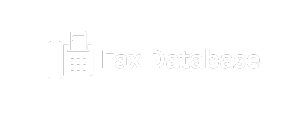In the realm of B2B marketing, reaching the right audience is paramount. Targeted B2B reach enables businesses to connect with potential clients who are most likely to convert, fostering relationships that drive growth and success. This article delves into the importance of targeted B2B reach, effective strategies to implement, and the tools available to enhance your outreach efforts.
Understanding Targeted B2B Reach
What is Targeted B2B Reach?
Targeted B2B reach refers to the strategic approach of identifying, engaging, and converting specific business audiences that are most likely to benefit from a company’s products or services. By focusing marketing efforts on these ideal customers, businesses can optimize their resources and improve their chances of success.
The Importance of Targeted B2B Reach
- Enhanced Engagement: By tailoring messages to specific audiences, businesses can create more personalized and relevant interactions, leading to higher engagement rates.
- Improved Conversion Rates: Targeted outreach focuses on prospects who are more likely to convert, significantly increasing the effectiveness of marketing campaigns.
- Cost Efficiency: Concentrating resources on high-potential leads minimizes wasted efforts and maximizes return on investment (ROI).
- Stronger Relationships: Understanding and addressing the unique needs of specific audiences fosters trust and loyalty, essential for long-term business relationships.
- Data-Driven Insights: Targeted approaches allow businesses to gather valuable data and insights about customer preferences and behaviors, informing future strategies.
Key Strategies for Achieving Targeted B2B Reach
1. Define Your Ideal Customer Profile (ICP)
What is an Ideal Customer Profile?
An Ideal Customer Profile (ICP) is a detailed description of the type of company that would benefit most from your offerings. It includes demographic, firmographic, and behavioral characteristics that define your best customers.
Steps to Create an ICP
- Analyze Existing Customers: Review your current customer base to identify common traits among your best clients.
- Identify Key Characteristics: Consider factors such as industry, company size, revenue, geographic location, and decision-maker roles.
- Use Data Analytics: Leverage data analytics tools to uncover trends and insights about your most successful customers.
2. Segment Your Audience
The Importance of Audience Segmentation
Segmentation involves dividing your target audience into smaller groups based on shared characteristics. This allows for more tailored marketing efforts that resonate with each segment.
Methods for Segmentation
- Firmographic Segmentation: Segment based on company attributes like industry, size, and location.
- Behavioral Segmentation: Analyze customer behavior, such as purchase history and engagement levels, to inform targeting strategies.
- Needs-Based Segmentation: Identify customer needs and pain points to create targeted messaging that addresses specific challenges.
3. Develop Tailored Messaging
Crafting Relevant Content
Once you have defined your ICP and segmented your 2024 Updated Phone Number List From Worldwide audience, the next step is to create tailored messaging that speaks directly to each group.
Key Considerations for Messaging
- Understand Pain Points: Research the challenges faced by each segment and address these directly in your messaging.
- Highlight Value Propositions: Clearly articulate how your product or service solves their problems and adds value.
- Utilize Different Formats: Experiment with various content formats, including blog posts, videos, case studies, and infographics, to engage different segments effectively.
4. Choose the Right Channels for Outreach
Identifying Effective Outreach Channels
Selecting the right channels for B2B outreach is critical for ensuring your message reaches the intended audience. Different segments may respond better to various channels.
Popular B2B Outreach Channels
- Email Marketing: A powerful tool for personalized Special Database details communication and nurturing leads.
- Social Media: Platforms like LinkedIn are particularly effective for B2B engagement, allowing for direct interaction with decision-makers.
- Content Marketing: Creating valuable content that addresses audience pain points can attract and engage potential customers.
- Webinars and Events: Hosting educational webinars and participating in industry events can position your brand as a thought leader and foster connections.
5. Utilize Data and Analytics
The Role of Data in Targeted Outreach
Data analytics plays a pivotal role in understanding audience behavior, measuring campaign effectiveness, and optimizing strategies for better results.
How to Use Data Effectively
- Track Engagement Metrics: Monitor key metrics such as open rates, click-through rates, and conversion rates to gauge the effectiveness of your outreach efforts.
- Analyze Customer Feedback: Utilize surveys and feedback forms to gather insights from your audience about their needs and preferences.
- Refine Strategies Based on Data: Continuously analyze performance data to identify trends and adjust your targeting and messaging strategies accordingly.
Tools and Technologies for Enhancing Targeted B2B Reach
1. Customer Relationship Management (CRM) Systems
Overview of CRM Systems
Conclusion
Achieving targeted B2B reach is essential for businesses looking to enhance their marketing efforts and drive growth. By defining your ideal customer profile, segmenting your audience, and leveraging data-driven insights, you can create tailored marketing strategies that resonate with your target market. Utilizing the right tools and technologies will further enhance your outreach efforts, enabling you to connect with potential clients effectively. Embrace the power of targeted B2B reach, and watch your business thrive in an increasingly competitive landscape.

